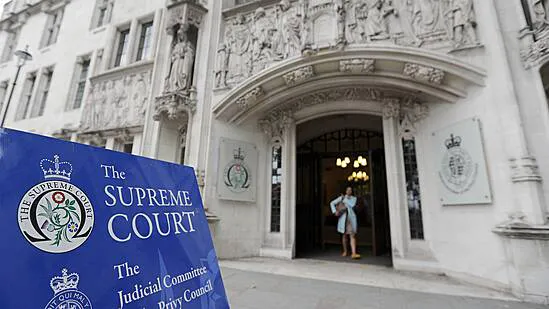The recent ruling by the United Kingdom’s Supreme Court on the legal definition of “woman” under the Equality Act 2010 has sparked significant debate and raised complex questions about the intersection of transgender rights and women’s rights. The court determined that transgender women holding a Gender Recognition Certificate (GRC) are not legally considered “women” for the purposes of the Act, specifically in relation to the Scottish government’s Gender Representation on Public Boards (Scotland) Act 2018. This decision stems from a challenge brought forth by the campaign group “For Women Scotland,” which argued that expanding the definition of “woman” to encompass transgender women would undermine existing protections for cisgender women and potentially create conflicts in single-sex spaces and gender-based policies.
The crux of the Supreme Court’s ruling rests on the interpretation of the Equality Act 2010, particularly concerning the interaction between the protected characteristic of “sex” and the provisions related to gender reassignment. The court found that the existing legislation defines “woman” as an individual assigned female at birth, aligning with a biological understanding of sex. While acknowledging the legal recognition and rights afforded to transgender individuals through GRCs, the court argued that these certificates do not alter an individual’s sex for the purposes of the Equality Act in this particular context. This interpretation maintains the distinction between sex, as assigned at birth, and gender identity, which is recognized through the GRC process. The court emphasized that this narrow interpretation in the context of the Scottish legislation does not negate the broader protections afforded to transgender individuals under other aspects of the Equality Act and related legislation.
The Supreme Court’s decision clarifies the existing legal framework but does not resolve the underlying tensions between transgender rights and women’s rights. “For Women Scotland” framed their challenge around concerns that including transgender women in the definition of “woman” would erode sex-based protections for cisgender women, particularly in areas such as single-sex spaces, positive action measures, and data collection. They argued that conflating sex and gender identity could potentially lead to unintended consequences and undermine the progress made in achieving gender equality for women. Conversely, transgender rights advocates argue that excluding transgender women from the legal definition of “woman” reinforces societal stigma and discrimination, hindering their full inclusion and participation in society.
The court’s judgment acknowledged the sensitive and complex nature of the debate, recognizing the strongly held views on both sides. Lord Hodge, delivering the ruling, stressed that the decision was based on a strict interpretation of the existing legislation and aimed to maintain legal clarity. He emphasized that the ruling did not diminish the rights of transgender individuals, which are protected under other provisions of the law, specifically those pertaining to gender reassignment and discrimination. While the decision provides legal clarity in this specific instance, it leaves open broader questions about the evolving understanding of gender identity and the necessary legislative adjustments to ensure equality and inclusion for all.
The implications of this ruling extend beyond the immediate context of public board representation in Scotland. The clarification of the legal definition of “woman” has potential ramifications for other areas where sex-based protections and provisions are in place, such as single-sex spaces, positive action initiatives, and data collection. This decision may necessitate further legislative action to address the complex interplay between sex and gender identity and to ensure that the law adequately protects the rights of both cisgender women and transgender individuals. The ruling underscores the need for ongoing dialogue and legislative reform to create a more inclusive and equitable legal framework that respects the rights and dignity of all members of society.
The Supreme Court’s decision highlights the ongoing challenges in navigating the evolving understanding of gender identity and its implications for law and policy. This ruling is likely to fuel further debate and advocacy on both sides of the issue, potentially leading to legislative changes or further legal challenges. The case underscores the need for a careful and nuanced approach to balancing the rights of different groups, ensuring that legal frameworks promote both equality and inclusion while respecting the lived experiences of all individuals. The ongoing dialogue and legal developments in this area will shape the future of gender recognition and the understanding of gender identity within the legal system.














